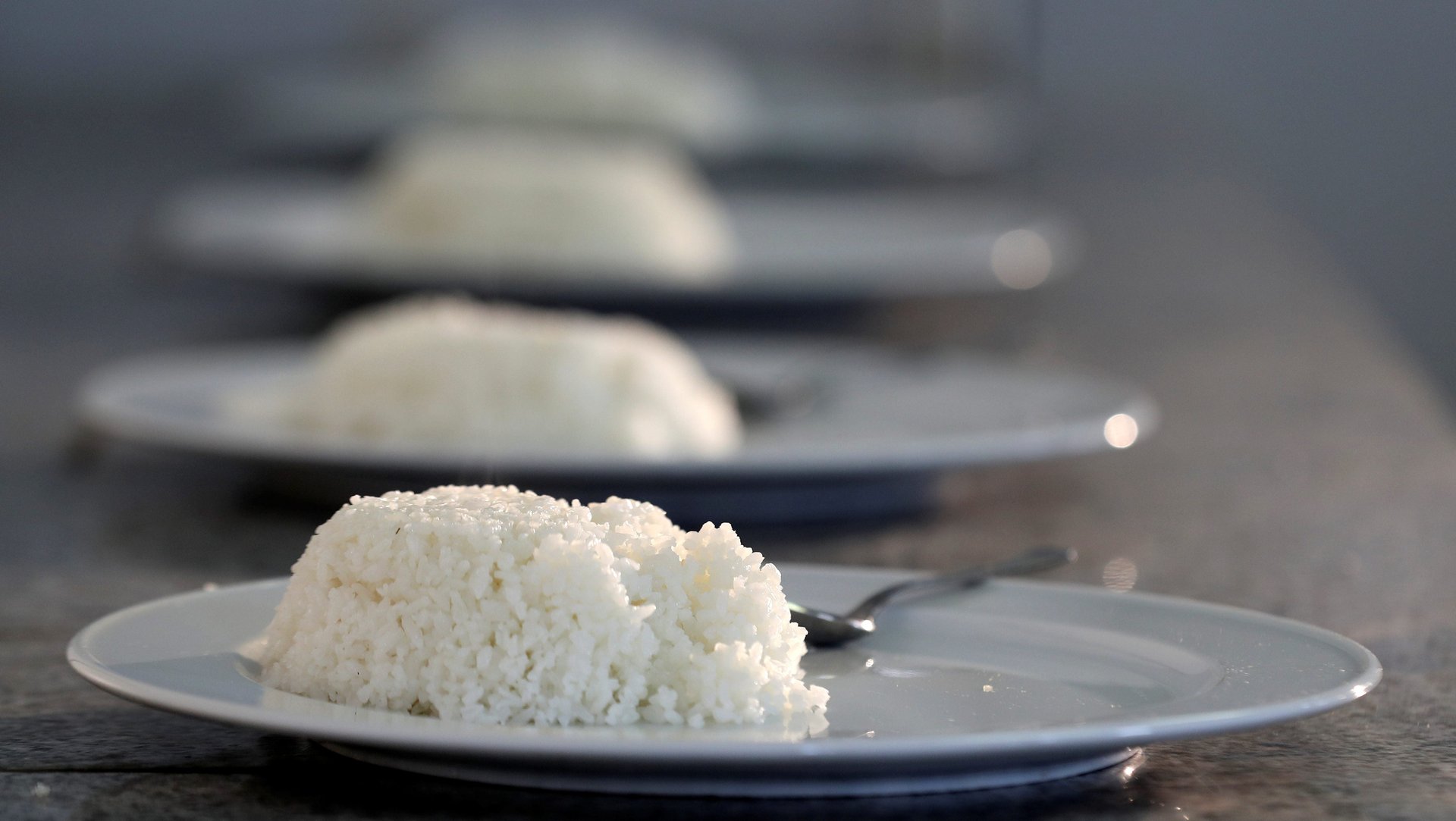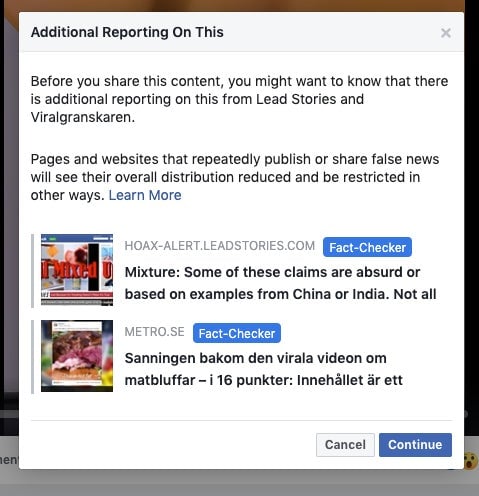The viral spread of a bogus video shows the insidiousness of misinformation
On my Facebook feed today, I saw two separate people had posted a slick, well-produced video that showed all the horrifying ways in which our food is altered to be cheaper, look fresher, last longer. It’s supposed to reveal some scary truths. There’s just one little problem: a number of the claims in the video are unfounded or bogus, and had been debunked in the past.


On my Facebook feed today, I saw two separate people had posted a slick, well-produced video that showed all the horrifying ways in which our food is altered to be cheaper, look fresher, last longer. It’s supposed to reveal some scary truths. There’s just one little problem: a number of the claims in the video are unfounded or bogus, and had been debunked in the past.
In the video, entitled “Is your food fake or real? Find out with these 16 easy tests at home,” a disembodied hand drops rice onto a pan. To the viewer’s shock, many of the rice grains turn completely translucent, and a caption tells you it’s because food companies add plastic to their rice. This is a claim that has circulated since 2010, according to the BBC, and has been disproven many times. Another “proves” that processed cheese is so fake that it is difficult to melt, which anyone who has eaten the popular American staple that is the gooey grilled cheese sandwich can tell you is not actually the case (fact-checkers at the website Snopes included).
The video, which is a collection of mistruths, half-truths, and exaggerations had over 83 million views as of June 5, just four days after it was first published. It has spread to Twitter, where it was shared more than 100,000 times in the same time frame, as well as Instagram. It demonstrates just how ineffective social platforms are at combatting misinformation—because the video actually did go through Facebook’s fact-checking process.

Depending on the the way you view the video, under it you may see two links from Facebook’s fact-checking partners, that tell you that the content is a mix of fact and fiction. When you try to share it, a pop-up tells you that “you might want to know that there is additional reporting on this” from the two publications, a Swedish one, and the English-language Lead Stories, neither of which are particularly high-profile websites. Lead Stories only published its fact check once the video once had already been viewed 70 million times, the author of the debunking article, Maarten Schenk, told Quartz. According to data provided by Schenk, the spread of the video slowed down after the fact-checking article was published—but it still managed to get millions more views, even after the debunking.
The video was published by Blossom, a platform with more than 50 million Facebook followers, which is owned by First Media, a social-media publisher that claims it partners with brands like Walmart, Pepsi, and Facebook’s own product, Portal.
“This video offers information from a variety of reputable and globally-recognized sources already available to the average consumer,” First Media told Quartz. In a lengthy email, it listed out a range of sources used to produce the video, ranging from more reputable sites like Vice and Consumer Reports to iffier outlets like the Daily Mail, and through to obscure publications like “Dual Networking” and “nutritionfacts.org.” (The Vice article First Media cited as one of the sources for the processed cheese claim, is, ironically, a story that debunks the notion that the cheese is evil because of its unnaturalness: “Basically, processed cheese is not some kind of Satanic alchemy—in fact, it’s pretty old-school science.”)
“The video does not claim that all products or specific manufacturers include these materials, nor does it make any health or nutritional suggestions or recommendations. They are demonstrations of things we consider to be important for our global audience,” First Media added, “however this content is intended only for informational purposes and as entertainment.”
Regarding the rice claim, First Media said that in certain areas of the world, like South East Asia, there had been problems with identifying real versus plastic rice. The supporting links were instructional YouTube videos and articles from Oneindia News, WikiHow, and India Times.
Snopes has reported that since it first encountered rumors about plastic rice, it’s been “unable to locate any substantiated reports that anyone successfully passed off plastic rice off as the real thing regularly (or ever) in any of the countries in which the rumor took root.”
Facebook wasn’t immediately available to comment.
The people that shared it in my feed were young, and seemingly internet-savvy. My colleague Mike Murphy noticed it on his feed as well, where it was posted by a journalism professor. The people who shared it did not find out that it was misleading from Facebook, but had to rely on their friends who’d point out in comments, posting things like: “that’s fake.”
Unlike other misleading videos swirling around the internet these days, such as the slowed-down video of US speaker of the house Nancy Pelosi, the Blossom video was snappy, shareable content that didn’t feel tonally different from many of the food videos that percolate social media every day. It was not an outrageous political claim, nor a piece of clearly biased information. It does not necessarily scream “fake.”
And perhaps that makes it even scarier.